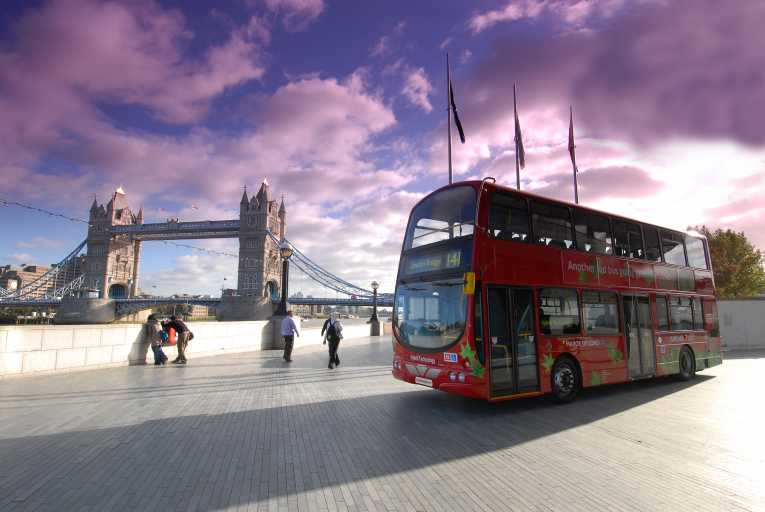Hybrid cars like the Toyota Prius have been the automotive success-story of the last decade, and this has fuelled growth in hybrid power for bigger vehicles like buses and trucks. Hybrid vehicles use electric power to supplement the polluting and inefficient internal combustion engine (ICE) which powers most vehicles using petrol or diesel.
Pike Research has published a report which estimates that the numbers of hybrid trucks and buses on our roads will boom in the next few years. Although hybrids are usually more expensive than the equivalent conventional ICE vehicle, their fuel savings more than make up for this, and of course their climate-damaging emissions are lower. Pike Research expects the worldwide market for hybrid and plug-in Medium and Heavy vehicles will grow to 103,940 vehicles annually by 2015 so there would be almost 300,000 on the world's roads by that year.
Hybrid vehicles use various methods to achieve fuel savings. The simplest is to have an electric engine whose batteries are charged by the main engine while running and during regenerative braking, which then is used at low speed to power the vehicle without emissions. These are called Hybrid Electric Vehicles (HEVs) and the Prius is a prime example.
Plug-in hybrid electric vehicle (PHEV) systems are a step further on, and get some of their power, from recharging their on-board batteries from the electric grid. Battery electric vehicle (BEV) systems get all of their power from off-vehicle sources, like electric recharging points, and they store the power on the vehicle. These vehicles require large batteries and recharging time, but they have zero emissions themselves.
One other class of hybrids is Power Take Off (PTO) trucks: diggers, cranes, lifts, and other maintenance vehicles which need to power their machinery while stationary. Instead of using the main engine, they use the on-board electric power, at a great saving of fuel and emissions because otherwise the internal combustion engine would have to idle for a long time to supply the power for operations.
In particular, many hybrid buses will be on the road, nearly 10,000 in the US already, as fleet operators try to reduce fuel costs, particularly for slow urban driving. In the rest of the world bus companies are trying out hybrids. According to the Washington-based Environmental and Energy Study Institute hybrid buses reduce emissions by 75 percent when compared to conventional diesel buses and an have average increase in fuel efficiency of 37 percent. They also can have reduced maintenance costs as wear on mechanical parts is lower and the electric power train has fewer mechanical parts than a conventional transmission, thus reducing the need for maintenance.

Photo: One of TfL's diesel hybrid buses
In the UK Transport for London (TfL) is leading the way in reducing the environmental impact of its bus fleet, with around 100 diesel hybrid buses operating in London, of varying types, to assess which is the best performing model, and even has a small number of hydrogen fuel cell buses running on one route.
Pike Research forecasts that sales of medium/heavy duty hybrid, plug-in hybrid and battery electric trucks are will grow at a compound annual growth rate of 63%, with sales of almost 300,000 vehicles, during the period from 2010 to 2015.
Probably the world's leading manufacturer of hybrid truck power systems is Eaton Corporation of Michigan, who report that customers of its hybrid systems have collectively accumulated more than 100 million miles of service, reducing fuel consumption by 4 million gallons of diesel fuel and harmful emissions by 40,000 metric tons. Last year UPS ordered 130 of Eaton's hybrid system that will be deployed next year in New York, New Jersey and California. “Hybrid electric technology has proven itself to be effective in the field,” said Mike Britt, UPS's director of vehicle engineering. “We are eager to receive these new Hybrids and get them on the road. Continued investment in fuel-efficient technology is a part of UPS's overall environmental strategy.”

Photo: A UPS hybrid parcel van
Overall, larger hybrids are going to become a significant part of commercial and public transport road use. Their reduced pollution and emissions, together with their fuel economy are a strong incentive for users, both large and small, to invest in these vehicles, especially as the price differential between them and conventional vehicles will come down as sales increase.
Links:










